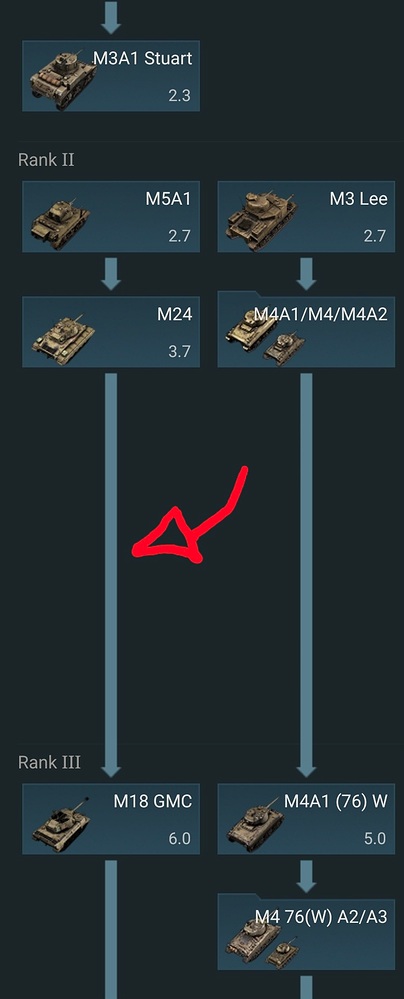- Yes
- No
Just as the M24 was entering production in early 1944, a new prototype of the Chaffee was authorized. Named the T24E1, it was rebuilt off the original T24 prototype by the American Car & Foundry Company, starting on 15 March 1944. After work was completed, it was transferred to Aberdeen Proving Grounds for testing on 10 October.
Compared to the production M24, the T24E1 lacked a commander cupola and had a removable double baffle muzzle brake, but the main feature that set the T24E1 apart was its new powertrain: a Continental R975-C4 engine (same as the one used on the M18 Hellcat) and a Spicer automatic transmission.
This modification greatly improved the T24E1’s mobility, bringing its power-to-weight ratio to over 20 hp/t. The maximum speed attainable (at highest gear) was 48 mph (77 km/h), compared to the 35 mph (56 km/h) top speed of the T24/M24. However, the transmission was found to be unreliable. Testing at Aberdeen continued until November 1945, when the war ended and plans to create a production version of the T24E1 were shelved.
Specifications
Specifications other than powertrain were identical to the T24, which in turn were fairly similar to the production M24.
Number built: 1 pilot vehicle
Crew: 5
Armor: same as T24/M24
Armament:
- 75 mm gun T13E1/M5 (parent of the M6 used on production Chaffees), vertical guidance -10°/15°, vertical stabilizer, 50 rounds of ammunition
- .50 HMG HB M2 on AA mount, 600 rounds
- .30 hull mounted MG M1919A4
- .30 coaxial MG M1919A4
- 2 inch smoke mortar, 15 smoke bombs
Max speed: 77 km/h
Mass: fully loaded, 17.2 tons (38000 lbs, per AGF BOARD) or 18.1 tons (40000 lbs, per Hunnicutt)
Engine: Continental R975-C4, 460 horsepower at 2400 rpm
More pictures
Left rear view; notice the larger engine compartment

Side view with muzzle brake attached
Top view at the American car & Foundry Company
R975-C4 engine mounted in the T24E1
Sources
- “DEVELOPMENT OF ARMORED VEHICLES”, AGF BOARD No. 2
- “Stuart: A History of the American Light Tank”, R. P. Hunnicutt
- “American Thunder: U.S. Army Tank Design, Development, and Doctrine in World War II”, Richard C. Anderson Jr.
This is my first vehicle suggestion, so feel free to add any information and sources that I’ve missed. Thanks for reading!






